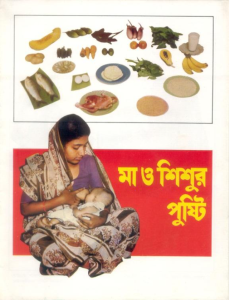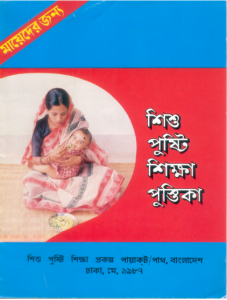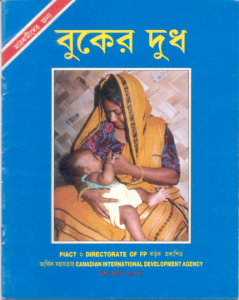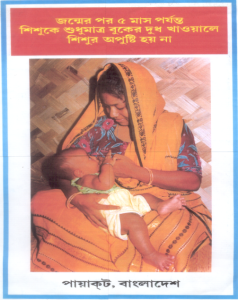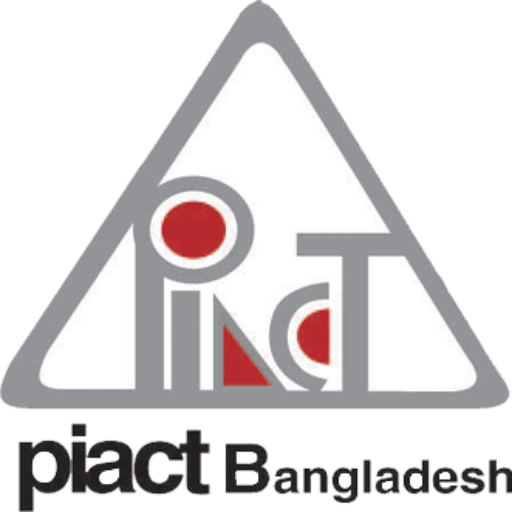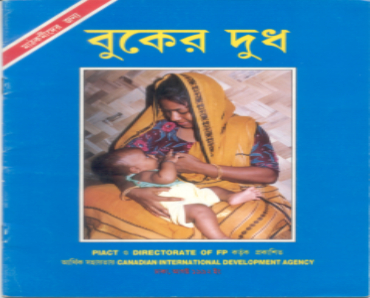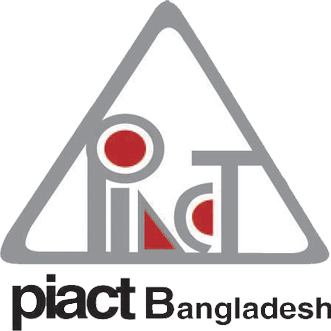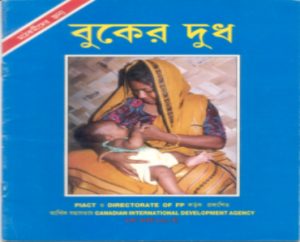
Development of Nutrition Education Pictorial Booklet for Use of Health Workers (1985): The agencies who were working in the area of mother and child nutrition in mid-eighties strongly felt the need for educational support materials on mother and child nutrition for the fieldworkers. To meet that need, PIACT Bangladesh developed a nutrition education support material titled “Mother and Child Nutrition” in 1985 with financial support from CIDA. Copies of this material were given to different NGOs as well as to the public health institutions for their use.
Development of Nutrition Education Package (1987 to 1988): PIACT Bangladesh had developed and implemented a nutrition education package in Sonargaon upazila under Narayanganj district during 1987 and 1988 with financial support from IDRC, Canada. The program covered over one lakh population (over 50% population of the upazila). The major activities included:
- A baseline survey on mother
- Child nutritional practices and child nutritional status
- Household level nutrition education along with demonstration of preparation of weaning food (Khichuri)
- Community mobilization
- BCC activities
- Developing referral system with health center and post intervention survey
The promotional /informational support materials / research report that came out of this program are the following:
- An illustrated educational support material titled “child nutrition education booklet”, 1987.
- A poster titled “save your child from malnutrition”, 1987.
- Chouhdury AY, Banu LA, Aziz KMA, Huq AMM, Chowdhury AMR (1990a). Do nutrition education program work? A field experiment in rural Bangladesh, PIACT Bangladesh, Dhaka.
- Choudhury AY, Banu LA, Aziz KMA, Huq AMM, Chowdhury AMR (1990b), “Effectiveness of a nutrition education program in Rural Bangladesh”, PIACT Bangladesh, Dhaka.
- Choudhury AY, Banu LA, Aziz KMA, Huq AMM, Chowdhury AMR (1990c), “Pre-and post-natal food habits and birth practices in rural Bangladesh”, PIACT Bangladesh, Dhaka.
- Choudhury AY and Bhuiya A, “Effectiveness of biosocial variables on changes in nutritional status of rural Bangladesh children, pre- and post-monsoon flooding”, Biosocial Science (1993), 25, p.351-357.
The lessons learned from the operations research referred above were shared with the interested stakeholders nationally and internationally and drew the attention of the public sector, NGOs and development partners to give emphasis on maternal and child nutrition . A number of initiatives were taken based on those operations research.
Development of a Comprehensive Nutrition Education Package: A Collaborative Effort Between PIACT Bangladesh and IPHN (1992 to 1993): The Institute of Public Health Nutrition (IPHN) wanted to adopt the nutrition education package developed by PIACT Bangladesh mentioned earlier in its program and they wanted to add a few more topics in the package such as result of deficiencies of selected micronutrient, immunization, etc. for use at the community level by workers/volunteers. Accordingly, a comprehensive nutrition education package was developed and an operations research was implemented in Araihazar upazila of Narayanganj district during 1992-1993 with financial support from CIDA. In this program, community volunteers were trained on nutrition and they provided nutrition education at the household level, demonstrated preparation of weaning food for children. This program involved the community leaders, religious leaders, village doctors, school teachers, grass-root level health and FP workers and the elderly women in the community. Anthropometric measurement of the children, pregnant and lactating mothers were taken during pre- and post-intervention surveys were conducted to measure the effectiveness of the program.
As output, this operations research came up with a comprehensive nutrition education package which was printed in large quantity and was used in the programs of IPHN. Many other agencies, particularly NGOs took copies of this material to use in their programs. The following reports came out of the two program:
- Mother and child nutrition education booklet, June 1992.
- Choudhury AY, Jahangir M, Arjumand L, Abdun Noor AJM, “A nutrition education intervention in a rural area”, Dhaka, January 1994.
Development of Educational Support Material for MCH-FP Fieldworkers: A Collaborative Effort Between PIACT Bangladesh and Directorate of Family Planning (DFP) : The operations research done in Sonargaon upazila mentioned earlier revealed, among other important issues, that:
- A majority of the mothers discarded colostrum
- The rate of exclusive breastfeeding up to 5 months was quite low (below 4%)
- There was lack of proper knowledge of breastfeeding
These findings drew attention of the MCH Unit of the Directorate of Family Planning (DFP) and they wanted to have an educational material on breastfeeding for use of the fieldworkers. Accordingly, in collaboration with DFP, PIACT Bangladesh developed a booklet and a poster on breastfeeding. The development process involved the relevant agencies such as a CPPBF, UNICEF, ICDDR,B, WHO, BNNC, BRAC, etc. This material was extensively tested in a rural area (Araihazar upazila) and then printed on a large scale for use of the field level FP-MCH workers.
Development of Community Managed Nutrition and Health Program: The experiences of the nutrition education programs implemented by PIACT Bangladesh in two upazilas (Sonargaon and Araihazar) indicated that improvement of nutritional status of the mother and children, and the overall population required active participation of the community and it should be linked with the health and development programs. From this perspective, in 1993, PIACT Bangladesh undertook a two-year operations research in Araihazar upazila with financial support from Swiss Red Cross titled “A Community Managed Nutrition and Health Program”. The program was implemented in a population of 70,000. The program strategy included:
- Sensitizing and mobilizing the community
- Establishing community managed “Gram Sasthya and Unnayan Sangha” by the community people which facilitated awareness raising about health and nutrition, and growth monitoring of under five children
- Making linkages with the existing health and development facilities (fisheries, agriculture, vetenary, credit programs, etc.)
- Using the traditional village networks for health and nutritional interventions
All the people living in the program areas were the target group of this program, but mothers and children under five were the primary targets.
Training was provided to traditional health care providers such as village doctors, drug sellers at the pharmacies , TBAs, kabiraj and spiritual healers to improve their knowledge and skills about mother and child health, and nutrition. A topic on human development such as communication skills for social interaction, acting as change agent, and understanding the sufferings of the community were incorporated in the training curriculum.
This program evolved a suitable, culturally acceptable, economically feasible and sustainable community managed primary health care program which could be replicated in the developing countries to manage the health and nutrition problems by the community itself. An educational material titled “Primary Health Care” was developed under this program.
Community Level Intervention Program on Micronutrients: A Collaborative Effort Among PIACT Bangladesh, BNNC and IPHN: PIACT Bangladesh conducted an operations research to assess the impact of zinc and vitamin-A supplementation on improvement of growth of children 6-36 months and reduction of severity of diarrhea and ARI. It was also planned to see the comparative and additive effect of vitamin-A on growth and morbidity of children. The study was done during 1996 to 1997 in Araihazar upazila in collaboration with Bangladesh National Nutrition Council and ICDDR,B. This operations research showed mixed results of zinc supplementation in young infants. It was, however, observed that zinc supplementation reduced diarrhea and respiratory infection in malnourished children.
The report of this operation research is as follows
Choudhury AY, Roy SK, “A Study of the Impact of Zinc Supplementation in Malnourished Bangladeshi Children”, PIACT Bangladesh, January 1998.
